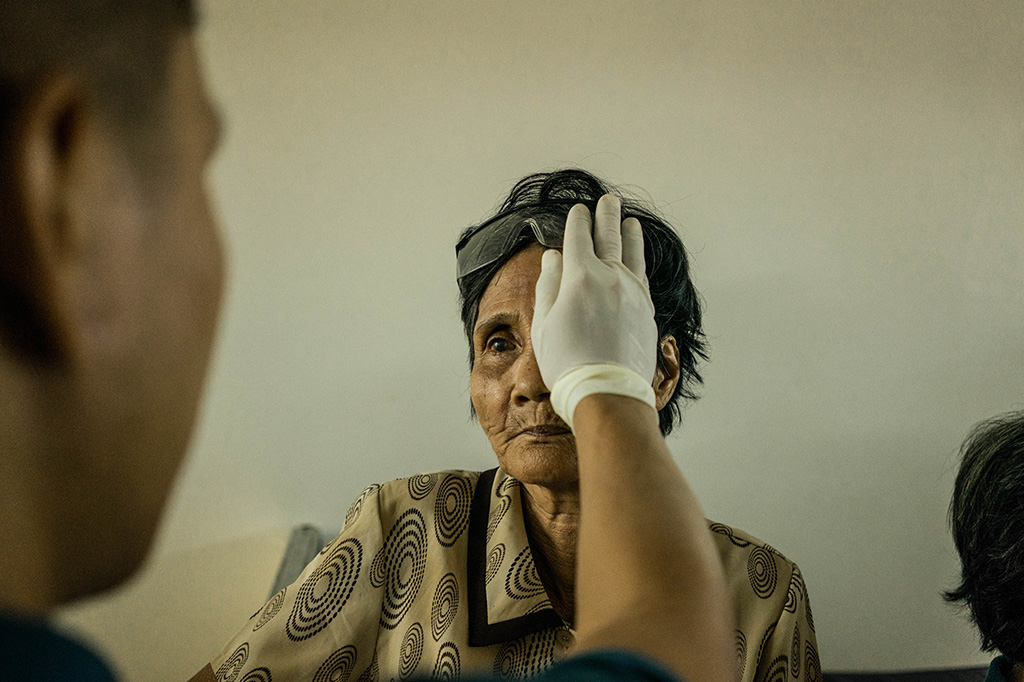Refractive Errors
Since 1974, SEE has worked diligently around the world to reduce the number of people impacted by refractive error issues. Our network of volunteer surgeons provide free treatment to thousands of patients every year, as well as skill-sharing and training on appropriate surgical techniques to help strengthen local health care infrastructure worldwide.
What are refractive errors?
Normally, images will be focused clearly on the retina at the back of the eye. However, if the lens in the eye is too thin or the eye is too short the focal point for the eye is too long, and this misalignment often causes vision problems.
(Source: Ferris, 2015)
There are 4 common types of refractive error:
- Nearsightedness (myopia) makes far-away objects look blurry
- Farsightedness (hyperopia) makes nearby objects look blurry
- Astigmatism can make far-away and nearby objects look blurry or distorted
- Presbyopia makes it hard for middle-aged and older adults to see things up close
(Source: National Eye Institute, 2022)

Refractive errors around the world
According to the World Health Organization, unaddressed refractive error is the second leading cause of untreated vision impairment, affecting 123 million people globally.
(Source: World Health Organization, 2019)
Uncorrected refractive errors are the main cause of vision impairment
Your donation will save someone’s sight
Risk Factors
Anyone can have refractive errors, but you’re at higher risk if you have family members who wear glasses or contact lenses.
Most types of refractive errors, like nearsightedness, usually start in childhood. Presbyopia is common in adults ages 45 and older.
(Source: National Eye Institute, 2022)
What are symptoms of refractive errors?
The most common symptom is blurry vision. Other symptoms include:
- Double vision
- Hazy vision
- Seeing a glare or halo around bright lights
- Squinting
- Headaches
- Eye strain (when your eyes feel tired or sore)
- Trouble focusing when reading or looking at a computer
(Source: National Eye Institute, 2022)

Uncorrected refractive errors are the main cause of vision impairment
According to the World Health Organization, an estimated 153 million people live with visual impairment due to uncorrected refractive errors.
That’s why diagnosing and treating refractive error right here in the U.S. is another one of our organization’s main focuses. Since the 1980s, our Santa Barbara Vision Care Program has provided free comprehensive eye exams and glasses to individuals who would otherwise not be able to access care. SEE also partners with organizations and doctors to provide free comprehensive eye exams to those in need, helping to reduce the number of uncorrected refractive error cases across the U.S.
SEE International & Refractive Errors
Since the 1980s, our Santa Barbara Vision Care Program has provided free comprehensive eye exams and glasses to diagnose and treat to individuals who would otherwise not be able to access care.
SEE also partners with organizations and doctors to provide free comprehensive eye exams to those in need, helping to reduce the number of uncorrected refractive error cases across the U.S.
Conditions We Treat
Get Our Monthly Updates
Connect With SEE
Learn More
Donate
(805) 380-7522
Mail donations to:
SEE International
PO Box 981263
W. Sacramento, CA 95798-1263
Home office address:
6500 Hollister, Suite 120
Goleta, CA 93117
Tax ID: #31-1682275



